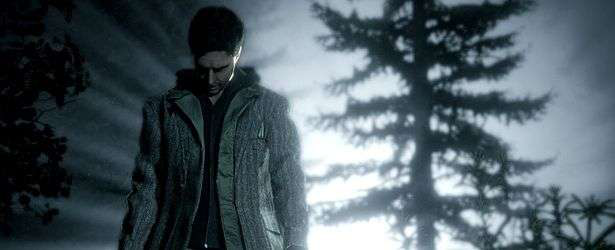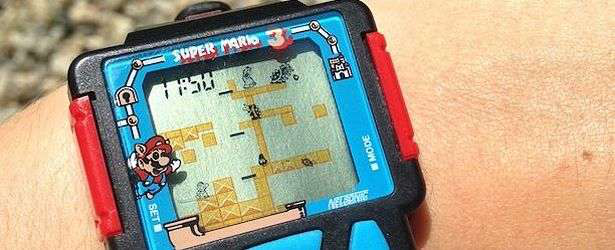Broken Age Act Two – Review
by Edward
|
 I suspect that when Double Fine launched their Kickstarter for Broken Age all those years ago, they had no idea that the project would become the perfect case study for crowd-funded games. In years to come it’ll prove to be a fascinating retrospective that showcases all the major highs and lows, from receiving more funds than expected and becoming a success story, to perennial delays, overinflated budgets, and the answer to the question of what happens when something you’ve backed doesn’t quite live up to the hype.
I suspect that when Double Fine launched their Kickstarter for Broken Age all those years ago, they had no idea that the project would become the perfect case study for crowd-funded games. In years to come it’ll prove to be a fascinating retrospective that showcases all the major highs and lows, from receiving more funds than expected and becoming a success story, to perennial delays, overinflated budgets, and the answer to the question of what happens when something you’ve backed doesn’t quite live up to the hype.
While the first Act of Broken Age wasn’t the much-needed revival of the point-and-click adventure that it was touted to be, it was still a very enjoyable and often-humorous tale that could be mature and poignant when the tone called for it. Although there were more than a few good laughs and some clever puzzles, it was let down by an inconsistent modus operandi that wanted to provide something for adventurers of yore but strip the mechanics down to their basest elements to make it more accessible for newcomers, then attempt to solve inherent problems with the genre despite ignoring fixes that have been made long since the last Lucasarts outing.
It was a mixed bag, but since then Double Fine had been working hard to release the no-doubt thrilling conclusion. Although it seems like they’ve taken on some of the feedback, Schafer’s got a brand new bag, but it’ll be a lot harder to tidy up the mess once it’s upturned and spilled out all over the floor.
 The story continues with our heroes Shay and Vella, respectively the long-suffering Captain of a spaceship protected by his overbearing “Mom AI” and a maiden who wants to end the kidnapping and sacrificing of women at the hands of the dreaded monster Mog Chothra. The first chapter of the story focused on the teenage need to seek independence and an identity beyond what society and your parents attempt to thrust upon you. It was, for a game made by a man who once wrote a story about time-travelling via portable toilets in order to defeat evil tentacles, far more heartfelt and intelligent than it initially let on.
The story continues with our heroes Shay and Vella, respectively the long-suffering Captain of a spaceship protected by his overbearing “Mom AI” and a maiden who wants to end the kidnapping and sacrificing of women at the hands of the dreaded monster Mog Chothra. The first chapter of the story focused on the teenage need to seek independence and an identity beyond what society and your parents attempt to thrust upon you. It was, for a game made by a man who once wrote a story about time-travelling via portable toilets in order to defeat evil tentacles, far more heartfelt and intelligent than it initially let on.
Initially, the story in Act Two seems to be broaching the idea that although rebellion is natural and should be inspiring to others around you, you should take responsibility for the consequences that will inevitably arise. You’ll revisit characters who’ve been subjected to your heroes’ short-sighted actions, and it’s a refreshing idea to see first-hand the destruction and damage that your actions immediately wrought, rather than them just telling you how you wrecked their life when you come across their awkward, shoehorned presence in the sequel as so many other series resort to.
 |
 |
 |
 |
 |
 |
However, as the tale grows, it starts becoming a lot less poignant and whimsical with each new revelation and development, and soon becomes oddly dark in tone, before rounding off with a weird ending that solves the immediate sitation, but not its long-term implications or dangers. That is, unless you pay particular attention to the credits, whereupon it’s still only hinted through some twee drawings. Most oddly for a point-and-click adventure, it’s entirely possible to miss out on a huge chunk of the story if you don’t bother to go through every dialogue option or explore areas you don’t necessarily need to visit at that given time. End a conversation early or simply concentrate solely on the puzzles ahead rather than explore and you can easily find yourself missing key beats, like, say, a character’s entire motivation.
 Admittedly, skipping the story can potentially be more deliberate than accidental, but it struck me as particularly odd that detailed explanations and massive revelations could be glossed over entirely if you weren’t careful enough, and it’s a pitfall I nearly fell into more than once myself. It can be argued that genre veterans would know to leave no stone unturned anyway, but the same can’t be said for the newcomers that the first half of the game went out of its way to pander to.
Admittedly, skipping the story can potentially be more deliberate than accidental, but it struck me as particularly odd that detailed explanations and massive revelations could be glossed over entirely if you weren’t careful enough, and it’s a pitfall I nearly fell into more than once myself. It can be argued that genre veterans would know to leave no stone unturned anyway, but the same can’t be said for the newcomers that the first half of the game went out of its way to pander to.
Anyone who did cut their teeth on the point-and-click adventure with Broken Age may soon find their canines getting chipped before long, as the puzzle difficulty is much more pronounced this time around. If Act One accomodated new players, Act Two is the landlord who jacked up the rent in an attempt to drive them out because it wanted to attract a more high-brow clientele.
Broken Age Act Two has puzzles that are solved based on timing, bland trial and error, knowledge of something you’d only know by playing through the other protagonist’s part of the story, or by having a fresh memory of the first Act. Even that won’t necessarily save you, as there’s one puzzle that requires you to actively ignore the solution from the previous chapter in order to progress, which you’d only know to do if you lucked into it or found a specific clue while playing as the other character, something you may not yet have done because it’s your choice who you’re controlling at any time. Even then, the hint is obscure enough that you could miss it, and while you’re solving this puzzle you can easily miss a throwaway line that is itself a solution to another sticky situation later down the road. Basically, it can be a cluster of confusion at the best of times.
 This is all compounded by something that the first half of the game had been so careful to avoid – the dreaded “Developer’s Logic”. In an attempt to make the puzzles more difficult, little to no consideration seems to be given to balancing learning curve or educating players as to what’s going on. You’ll come across a solution that you think will work only for it not to pan out and then try experimenting with other ideas, only to realise that you were right the first time but didn’t get the timing right, which you’d have no idea you needed to do because there were no such puzzles in Act One. Then, you could potentially spend several attempts getting ever-more frustrated because you’re out by less than a second or so, leaving you impatiently waiting to have another opportunity to try again.
This is all compounded by something that the first half of the game had been so careful to avoid – the dreaded “Developer’s Logic”. In an attempt to make the puzzles more difficult, little to no consideration seems to be given to balancing learning curve or educating players as to what’s going on. You’ll come across a solution that you think will work only for it not to pan out and then try experimenting with other ideas, only to realise that you were right the first time but didn’t get the timing right, which you’d have no idea you needed to do because there were no such puzzles in Act One. Then, you could potentially spend several attempts getting ever-more frustrated because you’re out by less than a second or so, leaving you impatiently waiting to have another opportunity to try again.
Meanwhile, there are also plenty of solutions that require a good deal of trial and error to stumble upon, with both the ‘knot’ and the ‘wire’ puzzles already being infamously legendary for falling victim to this. The first of these requires not only a deal of trial and error, but also trying to parse the weird analogical imagery into a method of actually solving what’s before you. Plus, if you get it wrong, then you have to start it all over again with a different design of knot to try your ever-diminishing patience.
 |
 |
 |
 |
 |
 |
The latter puzzle, on the other hand, made me do something that I don’t recall ever doing for any other game I’ve ever played – having to get a pen and paper to write down notes and diagrams in order to solve it. For older gamers this might be a welcome return, or it may be perfect for someone who wants something more conventionally challenging like it was in the “good” old days, but for everyone else, it can be a needlessly irritating bit of trial and error, especially when you then have to write down or memorise the several configurations of wiring needed to finish the game.
Oh, and both the knot and wire puzzles, like many puzzles throughout the game, are randomised, so the solution isn’t the same every time. Oh, goody.
 That being said, any failures during the ‘knot’ sequence instantly teleports you to where you need to go in order to save time back-tracking, but that being said, both the timed and the ‘wire’ puzzles can involve a lot of repeated character or background dialogue, which in the case of the latter got so bad that I had to mute the game just so I wouldn’t hear the same four lines for the umpteenth time. So, while there are some mitigations, there are just as many, if not more, irritations that can make the experience less fun than it should have been.
That being said, any failures during the ‘knot’ sequence instantly teleports you to where you need to go in order to save time back-tracking, but that being said, both the timed and the ‘wire’ puzzles can involve a lot of repeated character or background dialogue, which in the case of the latter got so bad that I had to mute the game just so I wouldn’t hear the same four lines for the umpteenth time. So, while there are some mitigations, there are just as many, if not more, irritations that can make the experience less fun than it should have been.
Yet, despite the weird discrepancies with the story and the massive difficulty spikes, there are some genuinely glorious moments scattered throughout that almost make the entry price and the subsequent delay between Acts worth it, with some brilliant revelations about characters you weren’t expecting to see again, to a personal highlight that sees you attempting to perform a stand-up routine to a tree. There are some brilliant jokes and puzzles scattered throughout, but they can be buried by the numerous frustrations you’ll find yourself having to deal with more often than you’d like.
At times it can almost feel as if two different sets of developers worked on each Act of Broken Age, such are the disparities between each in terms of tone, puzzle design, and story. Yet, what I found particularly weird is that nearly all of the flaws that bothered me most in the first Act ceased to bother me in the second. I was initially annoyed that there’s still no apparent way to reveal all hotspots, but it was no longer as much of an issue as it’s made clearer what you can and can’t interact with. Similarly, there was more than one puzzle that required you to combine items in your inventory, but since you were aware you could do that before needing to do so, it was no longer a problem. Broken Age Act Two is possibly one of the only games I’ve played where the predecessor’s flaws ceased to be because you’re already aware of the limitations, rather than because they’ve fixed them.
 The art style is still absolutely beautiful, with every moment a viable candidate for a screen-shot and every vista a viable wallpaper. Although you’ll still be travelling through the same locations as you did in the first half, some of the changes that have transpired give enough of a transformation to the surroundings that you can appreciate them with brand new eyes. Meanwhile, the voice-acting is still pretty stellar all around, with Elijah Wood once again proving himself as a brilliant casting choice and delivering some of the best lines of the entire game. Vella’s voice actress can still be on the flat, unemotional side at times, but it’s not quite as bad as it was the first time around.
The art style is still absolutely beautiful, with every moment a viable candidate for a screen-shot and every vista a viable wallpaper. Although you’ll still be travelling through the same locations as you did in the first half, some of the changes that have transpired give enough of a transformation to the surroundings that you can appreciate them with brand new eyes. Meanwhile, the voice-acting is still pretty stellar all around, with Elijah Wood once again proving himself as a brilliant casting choice and delivering some of the best lines of the entire game. Vella’s voice actress can still be on the flat, unemotional side at times, but it’s not quite as bad as it was the first time around.
As for the running time, I managed to complete both chapters in a total time of seven and a half hours, with what felt like slightly more of that time being spent on Act Two, if only because of the more difficult puzzles. It’s an efficient length that doesn’t outstay its welcome in terms of gameplay, but may prove to be a bitter pill to swallow for those who invested a lot of money into the Kickstarter and then had to wait over three years for the project to be completed, especially considering its perceived massive budget and the fact that they had to rely on sales of the first Act to fund the second.
Some will find themselves disappointed with Broken Age Act Two, and it wouldn’t be too hard to blame them, either. While the first part showed plenty of promise and a cliffhanger that shook the entire foundation to its core, Act Two instead almost collapsed under the pressure. From a slightly lacklustre conclusion of the story to massive difficulty spikes and puzzles that may go on to live in point-and-click infamy, it may prove to be a finale that’s remembered for its failures more than its successes; a disappointing yet entertaining adventure that proves that the genre isn’t dead, but that we should probably have left the revival to someone else, instead.
Pros- Still some brilliant laughs and the occasional ingenious puzzle.
- The voice acting is still stellar, with Elijah Wood a fantastic highlight.
- Beautiful artwork that makes the game constantly feel like a painting come to life.
- A huge difficulty spike for puzzles, including ones that are based on timing, involve way too much trial and error, and/or have randomised solutions.
- Story fizzles out and it's entirely possible to miss little things like the entire motivations of important characters.
- A seven to eight hour running time total is probably not entirely worth it for Kickstarter backers.
Broken Age is an incredibly important game, thanks to it proving to the mainstream that there's still an appetite for the point-and-click genre that companies like Daedalic Entertainment kept alive, and it helping propel Kickstarter as a viable method of funding games publishers would otherwise balk at.
While Act One showed plenty of promise, Act Two fails to live up to it all, and can prove a rather frustrating experience, being overly hard even for veterans and completely and utterly alienating to the newcomers the first part tried so hard to accommodate for. It can feel at times as if two different teams worked on each part, such are some of the inconsistencies. When it all comes together, there are some brilliant, inventive moments and some hilarious jokes that you'll remember for a long time to come. Yet, those will be also be remembered alongside puzzles that are already mired in infamy and may prove to long outlive the positives.
Last five articles by Edward
- Best of 2015: Journey's End: A New Beginning
- Journey's End: A New Beginning
- You Can't Choose Your Happy Ending
- Okay, Let's Fix Comedy In Games - The V-Effekt
- Time Keeps On Smashing Away


























There are no comments, yet.
Why don’t you be the first? Come on, you know you want to!